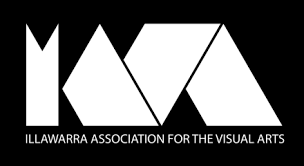Meet new IAVA member Richard Caladine. We asked Richard a few questions about his art practice.
What was your earliest memory of an interaction with Art?
In the early ‘60s my mother became interested in a new (to her in suburban Sydney) genre of art: abstract expressionism. She took us kids, some poster paints and cardboard into the yard.
She attached the cardboard with clothes pegs to the wire of the chook pen and we all had a go at this ’new’ form of art.
How would you describe your art practice? (Media; influences, approach?)
Media: acrylics, Pastels, Pencil, pen, coloured pencil, watercolours, Adobe illustrator, Adobe Photoshop, digital Photography, video
Influences: Jeffrey Smart, David Hockney, Roy Lichtenstein, Andy Warhol, Georgia O’Keefe, Ralston Crawford, Charles Scheeler.
Approach: My work explores the environment, both built and natural, seeking to find meaning. Simplification and reduction are often used as methods of abstraction to create works that express the essence of their subjects. My latest work explores the contrasts that abound in industrial landscapes. Like many artists I am fascinated by the co-existence of ugliness and beauty in industrial landscapes. But there are other contrasts. The industry is dirty and it pollutes, yet without it this town and the livelihoods of many would not exist.
Do you have a favourite artist and/or artwork? What is it that makes them your favourite?
David Gulpilil, Two Worlds by Craig Ruddy is an artwork I am often drawn back to. I love the combination of to its emotional connection, unusual materials and political statement. It reminds me that art can make one feel, raise awareness, inspire and be aesthetically pleasing.
Most recent adventure or achievement?
Part of a group exhibition at Nesting Box Gallery.
Any current goals you’re working towards?
A current project is ‘Practical Creativity’. The goal is to help individuals and groups develop and express their creativity. More creativity will produce more empathy and hence change the world for the better. When creativity is expressed individuals experience a sense of fulfilment or well-being, and society benefits. Materials for this project will:
- Show you how to develop your creativity
- Explain what creativity is and the difference between creativity and art,
- Show why creativity is essential to meet challenges both large and small.
The guiding principles are:
- We are all creative
- Creative thinking is the foundation of creative expression
- Creative thinking can be taught and learnt
Richard Caladine


